Guenther Steiner EXCLUSIVE: ‘Too ugly to act?’ Reluctant star is keeping it real
Netflix’s hit documentary series has depicted F1 in a new light with its unparalleled behind-the-scenes access since the first season aired in 2019. It may have faced criticism for over-dramatising certain aspects of the world championship, but Drive to Survive has helped to bring swathes of new fans, particularly from the United States.
It has provided some classic moments of entertainment and unearthed some unlikely superstars, including the unfiltered, unapologetic Haas team principal Steiner, whose outspokenness and amusing phrases have cemented themselves in internet meme folklore and seen him become a firm fan favourite.
- Why Haas isn't seeking 'quick fix' for next F1 title sponsor
- Hamilton’s telling admission as Mercedes face up to harsh reality
- Will Hamilton be the key to rescuing Mercedes’ 2022 F1 car?
But speak to Steiner about Drive to Survive and you will quickly discover that the direct Italian views things very differently.
“No,” Steiner responds when asked if he feels like a star during an exclusive interview with Crash.net. “I honestly don’t. I didn’t even watch the shows, any of them.
“You feel it because the people, they see you and they know you. People obviously come and talk to you and want selfies and I’m recognised, but I do not feel like a star. This was not on my career plan.”
Despite being a key part of the series, Steiner has not seen any of the four seasons of Drive to Survive and has no interest in watching it.
“Obviously people tell me what is in there and I remember it because I was there when they filmed it!” Steiner adds. “So I know roughly what is in there but I don’t know how they edit and all that stuff.
“Why didn't I watch it? I don’t want to change because it’s me. I also don’t listen to myself on radio interviews because it’s just something I don’t enjoy. It’s not like I’m afraid of it, I just don’t enjoy it.
“With Drive to Survive, the biggest thing is, if I watch it, you try to do different and [be] better, whatever better is. But then it is not me anymore. Then I have to put effort into doing that and then I cannot focus on my job.
“My job is running an F1 team, it’s not being an actor. As much as people say ‘oh you are a good actor’ - no, I am not an actor, I am doing my job. That’s maybe the difference. I always say I am too ugly to be an actor.”
With Steiner, it is “absolutely 100%” the case of “what you see is what you get”.
Steiner has no issues with how he is portrayed by Netflix and is comfortable dealing with having such a prominent role in the series, even if he has no desire of pursuing a career in acting.
“Even if I am not happy with it, I cannot change it so I better get used to it,” he says.
“I’m dealing with it like this. It’s like I’m okay doing it, as I said before, it’s not in my career plan to do this but it happened, so okay, that’s what it is - so deal with it.
“I respect what it does for us and therefore I don’t want to change it. So I’m okay with it.”
A no-nonsense management style
Steiner’s forthright demeanour is also reflected in his management style and how he interacts with his drivers, something that was captured by Netflix.
Following contact between then-teammates Romain Grosjean and Kevin Magnussen amid rising tensions at Silverstone in 2019, Steiner is heard having a heated exchange with both his drivers. Off-camera but still on-mic, Steiner tells the pair “I’ve fucking had enough of both of you”, before Magnussen proceeds to damage his door on his way out of the room.
Drive to Survive has caught many tense moments at Haas in recent years but Steiner ultimately believes his no-nonsense approach is the best way to get the most out of his team.
"I don’t want to have people around me, because I’m the same, who tell me what I want to hear because then how will we get better?” Steiner explains.
“If they all tell me what I want to hear, how do we make progress? I am the same, if I think something is wrong, I say it. If you give me an argument that I’m wrong, I’m fine with it, I’m not getting upset. There’s nothing to be upset about.
“But sometimes I just need to bring discussions to an end because sometimes, what we tend to do as human beings, is to debate things which are not worthwhile having the debate.
“It’s better to take the decision and the decision be the wrong one, then take no decision and keep on debating. So I try to keep it real.
“Gene Haas [Haas team owner] lets me do a lot of this because normally if you make a wrong decision, you are judged by this decision. But ‘okay it was wrong, so what do we do next to make it right?’ That is my approach to things.
“Sometimes we do things wrong but all of a sudden they are fixed because we learn how it wasn’t right. We cannot try to find excuses for why we did what we did.
“No, let’s fix it, let’s be honest. We made a mess out of it, next time we will not do it and we will move on.”
It is Steiner’s honest and straightforward character that makes him Magnussen’s favourite F1 team boss. After all, Steiner managed to convince Magnussen to complete a remarkable return to F1 this year with his former team as Nikita Mazepin’s replacement.
“The good thing about Gunther is he’s very straightforward,” Magnussen tells Crash.net. “You can trust Gunther. He says things how they are and how he feels. So that’s very easy and very transparent.
“He’s also someone that everyone in the team feels comfortable to approach. There’s not a lot of fear in the team. I feel like everyone is confident to take responsibility and put the word forward.
“That sort of atmosphere comes from the top, that people feel comfortable and supported. Certainly a large part of that is down to Gunther.”
Taking advantage of the American boom
F1’s increased presence in the United States has been clear to see, with last year’s race at Austin drawing a record-breaking crowd of 400,000. The inaugural Miami Grand Prix debuts this weekend, while a new race in Las Vegas next year will make it the third US venue on the calendar.
As the first F1 team to race under the US flag in 30 years, Steiner acknowledges that Haas can do more to exploit the American market and its identity through the growing interest Stateside.
“I think we need to and we are doing it,” he says. “It’s not that we are doing nothing, it just takes time. Obviously being the only American team, I think we need to, I wouldn’t say take advantage, but exploit the market.
"The popularity has increased in the States for F1. I would say it started about two years ago, last year obviously it ramped up and it keeps going up, so it takes a bit of time.
“Now the corporates and the sponsors need to really realise how much this is worthwhile because you cannot say ‘oh there’s this big plan that F1 will be successful in America’. Yeah, let’s wait for the success and then we talk again.
“But I think we are getting closer to that point and there will be more interest and hopefully, we can take advantage of that.”
Haas has more freedom to employ such a strategy now following the termination of its title sponsor with Uralkali in the wake of Russia’s invasion of Ukraine at the end of February.
Despite the sudden, unplanned split from Uralkali, the American outfit is not hurrying into new major F1 sponsorship deals.
Asked if Haas has the flexibility to go about things its own way now the Mazepin’s have gone, Steiner replied: “Yeah I’m sure we have... and we have got more availability.”
The search for the next American F1 driver
Although F1 has enjoyed a significant rise in interest from the US fanbase, there has not been an American driver on the grid since Alexander Rossi participated in five races for the now defunct Marussia team at the end of 2015.
Mario Andretti (1978) and Phil Hill (1961) remain the only two Americans to win an F1 title and the world championship has been increasingly starved of US talent over the past two decades.
Aside from running Santino Ferrucci as a development driver, F1’s newest entity has never fielded a US driver.
So why the lack of American drivers? And how much of an appetite is there for Haas to become the next team to have one?
"I think an American driver for F1 would be fantastic, obviously for us it would be the ultimate thing,” Steiner says.
“But there are two difficulties with this. First is, if as a team you don’t give an American driver what he thinks he deserves or he expects, it’s not good for us and why would we do it then.
“And secondly, if the driver isn’t good enough, it’s not good for the American market as well. It needs to be at least a success story. I think there was a time where American drivers didn’t put a lot of effort to get into F1 because it’s very difficult.
“America is a fantastic place to live and to do F1 seriously you need to move to Europe for a period of time when you are a young man. When you are a good race car driver there are a lot of opportunities in the US which are pretty good.
“I think now with this increased interest in F1, hopefully there is a build up again. It will take time, but hopefully someone comes one day and is a star here.”
IndyCar star Colton Herta has caught the attention of F1 teams, with the 22-year-old penning a deal to test McLaren’s 2021 car this season. There are also several up-and-coming US talents in Formula 2 and Formula 3, including Williams junior Logan Sargeant.
As of yet, none have secured the necessary super licence points required to race in F1. But with a sudden influx of young American drivers on the F1 support series ladder, that could soon change.
Steiner insists there is “no pressure” for Haas to sign an American driver and stressed the team will only do so when it believes it has found the right candidate and is in a position to turn it into a success story.
“If there would be a good American driver around, we would pick him up,” he adds.
“You need to make an experience here because to set somebody up to fail, it’s also not the right thing to do. That’s my opinion anyway.
“To be selfish to put an American driver in so we get the interest out of it, I don’t think that is the right thing to do.
“If you do it, you need to set it up so he is successful. That is the most important thing to do.”
Causing a stir in F1 and the next step
After two difficult years languishing towards the back of the grid, Haas have taken advantage of F1’s rules revolution and enjoyed an upswing in form at the start of 2022.
Magnussen claimed a best finish of fifth at the season-opener in Bahrain and the team currently lies eighth in the constructors’ championship on 15 points.
Haas’ return to the midfield fight has been met with scrutiny from some of its rivals, who have taken issue with the nature of the team’s close alliance with Ferrari. Since it joined the grid in 2016, Haas has enjoyed a partnership with Ferrari that enables it to benefit from taking customer parts and its power unit.
The resurfacing of concerns relating to so-called A and B-teams has coincided with Haas’ fortunes improving, something that is not lost on Steiner.
“If you know that you are doing everything correctly you don’t need to worry about it,” he says. “Last year nobody complained about us when we were dead last!
“So what do you want? Do you want to be last and have nobody complaining, or be in the midfield and then have people complaining? I pick the second one.”
Major organisational changes including employing ex-Ferrari man Simone Resta as the team’s first-ever technical director has only helped to strengthen Haas’ small-scale, underdog F1 operation.
After some turbulent years, Haas finally appears to be back fighting where it belongs.
But what is needed in order to take that next step?
"I think at the moment we need to solidify what we have got,” Steiner concludes. “The next step is being solid in the midfield.
“Solidifying where we are, what we tried to do in 2019 and didn’t achieve because there was a regulation change. If there wouldn’t have been a regulation change between ’18 and ’19 I think we would have been here now.
“So our next step is to make it solid again and build up from there. Not trying to run before we can walk. That is my aim.”
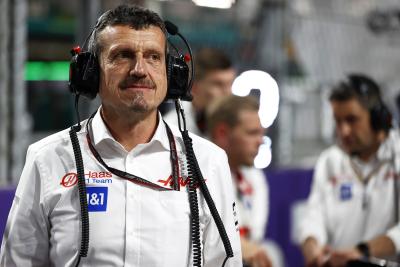
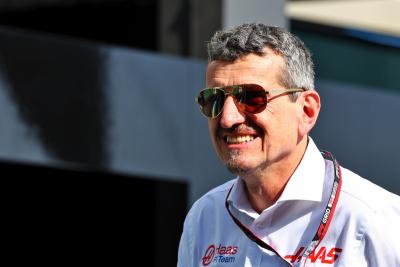
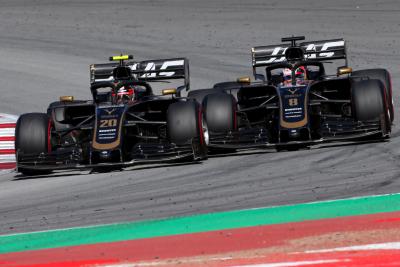
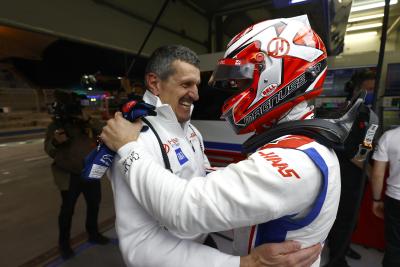
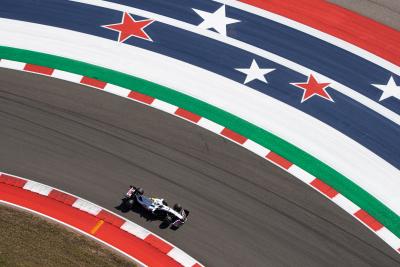

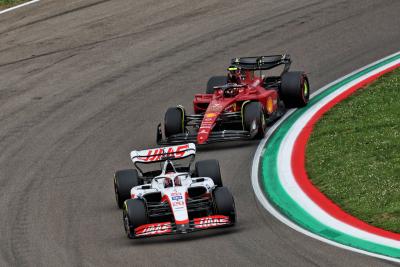


![Johann Zarco, LCR, Honda RC213V, 2024 San Marino MotoGP, Misano, action [Gold & Goose]](https://cdn.crash.net/styles/thumbnail/s3/2024-09/GnG_1166323_HiRes.jpg?itok=vpgrU7Q4)

![Jack Miller, KTM Factory Racing, KTM RC16, San Marino MotoGP, Misano, action [Gold & Goose]](https://cdn.crash.net/styles/thumbnail/s3/2024-09/GnG_1167624_HiRes.jpg?itok=iz7mA4EQ)


![Fabio Quartararo, Monster Energy Yamaha Racing, Yamaha M1, 2024 MotoGP, Misano Test, action [Gold & Goose]](https://cdn.crash.net/styles/thumbnail/s3/2024-09/GnG_1168928_HiRes.jpg?itok=fcYSole_)
![Toprak Razgatlioglu, ROKiT BMW Motorrad, BMW M 1000 RR, Magny-Cours, WorldSBK [Gold & Goose]](https://cdn.crash.net/styles/thumbnail/s3/2024-09/GnG_1165133_HiRes.jpg?itok=GD5SVNVG)

